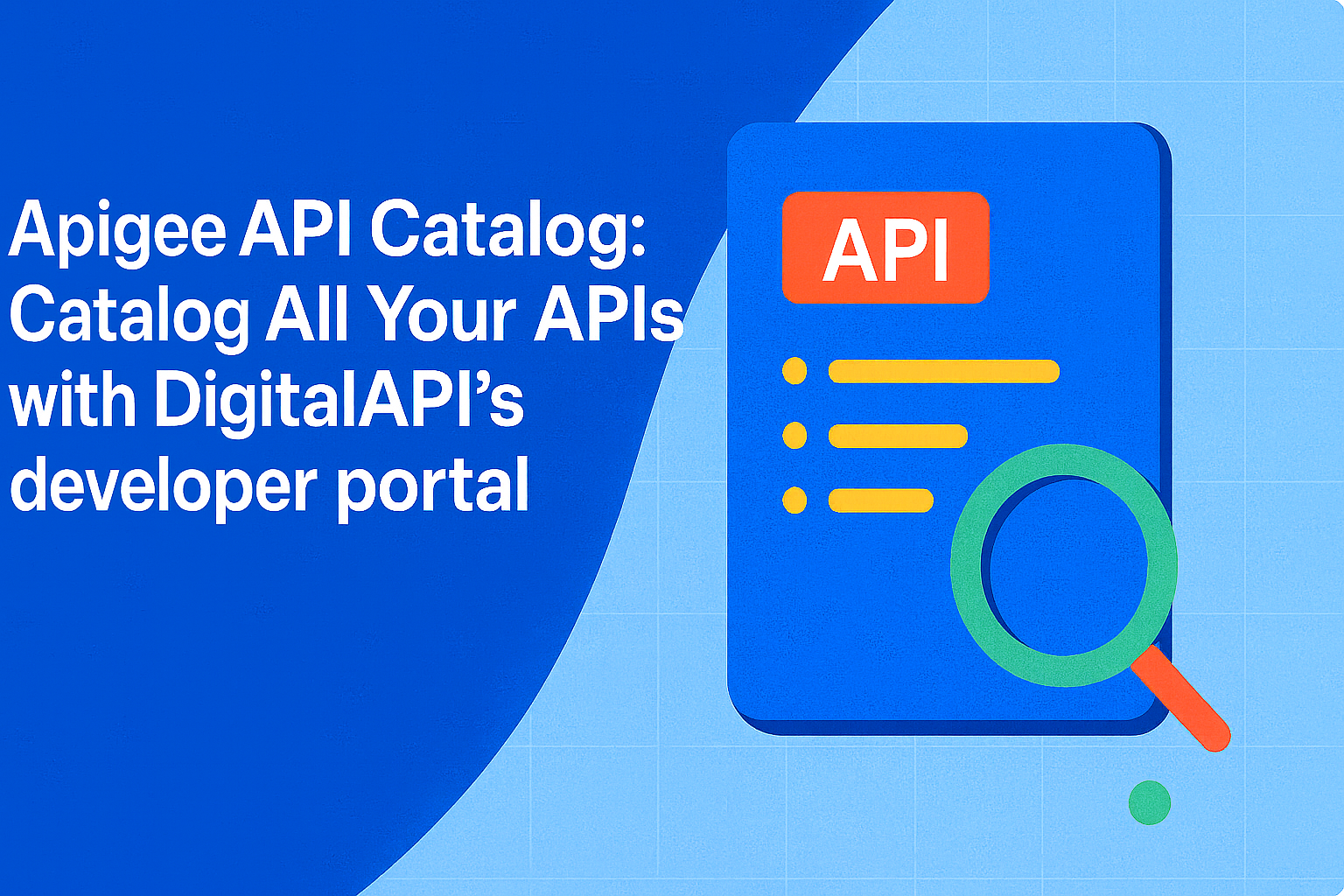Blog
How API Documentation Improves Developer Adoption (and Why It Matters in 2025)
Updated on:
.png)
The first development decision often happens before a line of code is written. Most developers begin onboarding with documentation and look for auth flow, headers, parameters, and working request examples. If the docs are unclear or outdated, teams lose momentum before the integrations begin.
Modern API documentation supports developers with test consoles, ready-to-use snippets, and versioned references. It helps teams learn and move quickly without much support. This blog explains how API documentation improves onboarding and drives developer adoption in 2025.
What is API documentation?
The API documentation is a well-organized set of technical instructions that explains how to use an API’s endpoints, parameters, and authentication methods. It helps developers understand, test, and integrate the API into real-world workflows.
Why API documentation matters
API documentation matters because it enables developers to evaluate, test, and integrate a product independently. It shortens the path from exploration to adoption while building trust and encouraging hands-on learning.
Here’s why documentation directly influences developer adoption:
- Evaluation of functionality: It allows developers to evaluate functionality, complexity, and compatibility before committing to integration. Examples and environment details show whether the API fits into existing workflows and prevents wasted effort.
- Faster testing: Clear documentation helps teams test endpoints, debug faster, and reduce time to first successful response. Payload samples and error notes guide developers through blockers and make troubleshooting straightforward.
- Trust and reliability: Strong docs build trust by showing reliability, version consistency, and support for real-world use cases. Detailed change logs and transparent update notes give developers confidence that the API will not break unexpectedly.
- Interactive features: Interactive features like code snippets and test consoles reduce support needs and improve decision-making. They let developers validate endpoints quickly, experiment with parameters, and confirm performance before scaling usage.
The link between documentation quality and developer adoption
Documentation shapes the first impression of your API. When it’s unclear or poorly structured, developers lose trust fast. High-quality docs let teams onboard, test, and integrate quickly without escalating to support.
Here’s how documentation quality directly shapes developer adoption:
1. Visibility and onboarding efficiency
Public, well-structured documentation accelerates onboarding by reducing friction during early discovery. When APIs are hard to explore or hidden behind access gates, developers deprioritize integration and move on.
For example, DigitalAPI increased API adoption by 25% after launching a developer portal with searchable docs, categorized listings, and real-time testing. It improved early-stage visibility and enabled developers to evaluate endpoints without delays or support dependency.
2. Structure and comprehension speed
A clear documentation structure helps developers navigate faster by grouping endpoints around real tasks. It reduces friction during onboarding and speeds up comprehension across use cases and environments, especially in complex multi-step flows.
Comprehension improves when examples, headers, and parameter notes follow a predictable pattern. Developers retain information faster when content mirrors common request-response flows, not just internal backend logic or database mappings.
3. Reference accuracy and integration success
Inaccurate references stall developers mid-integration. A missing payload example or an outdated endpoint forces them to stop, search, or switch. Clean references reduce friction and build trust at every implementation step.
Teams move faster when the docs mirror real API behavior. Accurate error messages, current auth instructions, and tested code blocks allow developers to ship confidently without second-guessing or external support.
4. Versioning and ongoing usability
Without clear versioning, even small updates can break integrations. Developers shouldn't have to guess what changed or what needs rewriting. Reliable documentation flags breaking changes early and shows how to adapt without losing time.
Usability isn’t just about the first read. Developers revisit docs during debugging, refactoring, or testing new features. Structured updates, migration guides, and labeled code samples help them stay aligned without rereading the full spec.
Core elements of effective API documentation
Effective API documentation relies on key elements that improve clarity, reduce integration time, and support adoption. These components help developers understand capabilities faster and build confidently with fewer support bottlenecks.
Here are five core components of API documentation:
- Clarity and consistency: Clear, consistent language ensures that API documentation stays readable across experience levels. Defined terminology, uniform naming conventions, and structured layouts reduce confusion. It improves onboarding speed and supports long-term developer adoption across changing teams and evolving use cases.
- Comprehensive reference and guides: Good API documentation doesn’t just list endpoints, but explains how each part works in practice. Developers rely on clear references and practical guides to understand workflows, avoid mistakes, and reduce trial-and-error while building real applications.
- Interactive and searchable docs: Interactive API documentation helps developers test endpoints in real time, which improves onboarding efficiency. Searchable layouts reduce confusion by surfacing related methods, payloads, and code samples. DigitalAPI’s developer portal simplifies exploration with try-it options and instant token generation.
- Version control and regular updates: Version control and regular updates ensure developers always reference accurate, production-ready behavior. Clear changelogs prevent confusion around deprecated endpoints or breaking changes. API teams that publish version history improve trust, reduce support tickets, and streamline adoption across product cycles.
- Visuals, code samples, and tutorials: Visuals, code samples, and tutorials make API documentation practical. Developers can reference working code, follow visual flows, and test endpoints with guided steps. It reduces integration errors, accelerates implementation, and supports long-term usage without support dependency.
Best practices to boost developer engagement
Developer engagement improves when API experiences feel fast, intuitive, and empowering. These practices reduce onboarding friction, support long-term adoption, and limit support dependencies. Here are the best practices to boost developer engagement:
1. Meet developers where they are
Developer engagement improves when documentation is embedded into familiar tools and platforms. Hosting guides on GitHub, providing Postman collections, or integrating with CLI workflows removes unnecessary steps. It minimizes friction and respects existing developer preferences.
2. Adopt an API-first design approach
API-first design puts integration needs at the core of product architecture. It ensures documentation is aligned with actual implementation, reducing confusion. This practice improves consistency across endpoints and helps teams publish stable, scalable APIs from day one.
3. Provide sandboxes and testing consoles
Testing consoles lower onboarding friction by allowing real-time request validation without production risk. They support faster debugging, reduce support tickets, and increase developer trust. DigitalAPI’s API sandbox enables parameter tweaking and instant feedback within its interactive docs.
4. Make docs discoverable
Developers expect to find relevant API documentation without digging. Use structured headings, search metadata, and internal navigation to improve discoverability. Clear hierarchies and semantic tagging support faster access, especially across complex developer portals or public marketplaces.
Common mistakes to avoid in API documentation
Poor API documentation often stems from avoidable missteps. These mistakes increase support overhead, frustrate developers, and stall adoption. Addressing them early improves clarity, reduces integration time, and builds long-term trust.
Below are common mistakes that reduce developer adoption:
Overlooking the developer platform experience
Even well-written docs fall short if the developer portal is hard to navigate or lacks integrated tooling. A disjointed experience can drive developers away before they ever integrate.
How to avoid: Use a platform that centralizes docs, changelogs, sandboxes, and support. Platforms like DigitalAPI offer interactive portals where developers can test endpoints, access versioned guides, and find answers faster.
Lack of clear purpose or structure
Many documents open with endpoints and parameters without clarifying what the API actually does. It forces developers to reverse-engineer its purpose, which creates friction and reduces engagement.
How to avoid: Begin with a short overview that outlines the API’s functionality and core use cases. Follow a consistent structure that introduces authentication, key resources, error handling, and real-world examples in logical order.
Overloading documentation with jargon
APIs often include terms and acronyms that only make sense to internal teams. For external developers, it creates confusion and slows down adoption.
How to avoid: Use plain, accurate language. Explain key terms when they first appear. Include a glossary for edge cases or domain-specific concepts that may not be familiar.
Ignoring version control
Failing to document API changes across versions creates confusion and breaks integrations. Developers may follow outdated logic or miss critical updates that affect performance or functionality.
How to avoid: Track all changes using a changelog. Archive old versions but keep them accessible. Use clear labels and timestamps to help developers stay aligned with the latest version.
Skipping visual aids and code samples
Dense text without examples forces developers to guess how endpoints behave. It slows down implementation and increases dependency on support teams.
How to avoid: Include working code snippets, request-response pairs, and sequence diagrams. Visuals help explain logic, while real examples show expected inputs and outputs for each method.
Emerging trends in API documentation (2025–2026)
API documentation is evolving fast to meet complex developer needs. The next-gen trends in API documentation prioritize intelligence, adaptability, and seamless integration across expanding ecosystems.
Here are four emerging trends shaping 2025 and beyond:
- AI-powered documentation assistants: AI tools now help generate code snippets, detect outdated content, and assist in search. In the future, they’ll offer contextual suggestions and explain workflows based on user behavior. These assistants will reduce friction during onboarding and documentation updates.
- Personalized developer experiences: Documentation is shifting from static text to tailored, adaptive content for different users. Machine learning will personalize onboarding, learning paths, and relevant examples. It helps experienced teams skip basics while supporting newcomers through contextual guidance.
- Microservices and serverless support: Future API documentation will map dependencies across microservices and serverless components automatically. It prevents gaps in logic, ownership, or usage patterns. Platforms will standardize contracts and document integration logic as systems become increasingly modular.
- Integrated security guidance: With rising threats and compliance demands, API documentation now includes security-first practices. It covers token scopes, auth flows, encryption standards, and incident protocols. Each integration step provides developers with clear security guidance.
From Documentation to Adoption: The Bottom Line
Effective API documentation improves developer adoption, reduces integration time, and supports consistent adoption across teams. When structured clearly, it becomes a scalable asset rather than a support burden.
DigitalAPI enables this shift by combining personalized docs, testing sandboxes, and governed access into one platform. As API ecosystems expand, it helps product teams future-proof developer onboarding and increase platform engagement.
FAQs
1. What makes API documentation effective for developers?
API documentation provides the developers with precisely what they need to develop quickly, an understandable endpoint, test demonstrations, uniform name usage, and precise references. It minimizes trial and error and generates confidence in the integration process.
2. How does poor documentation hurt adoption?
Poor documentation leads to confusion, integrative slowness and more support tickets. When developers are unable to get answers or reference material, they are bound to lose momentum. It directly increases the onboarding time and decreases the rates of the total API usage.
3. Which tools automate API documentation?
DigitalAPI, Redocly, Postman, and SwaggerHub offer automated documentation solutions. They convert OpenAPI specs into live references, maintain version control, and reduce manual effort while improving accuracy and developer experience.
4. How often should documentation be updated?
The API documentation has to be updated with each change in endpoints, with the release of new features, or a shift in security requirements. Frequent reviews assist in maintaining the accuracy of information, as well as in developer’s confusion in the process of integration or testing.
5. How does DigitalAPI improve developer onboarding?
DigitalAPI improves onboarding by centralizing API access, enabling sandbox testing, and simplifying documentation discovery. It helps developers start faster and reduces support needs across internal and partner teams.
You’ve spent years battling your API problem. Give us 60 minutes to show you the solution.
.svg)







